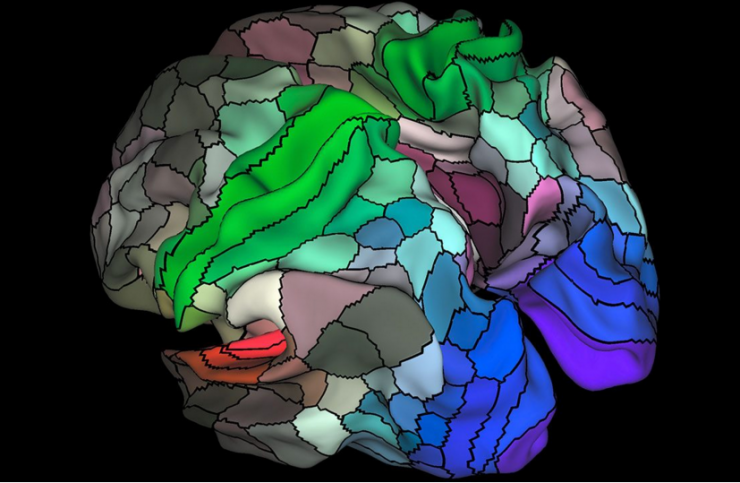INTRODUCTION: In 1900, neurologist Korbinian Brodmann hand-painted a simple sample of a brain map based on the differences in cellular structures that can be observed under the microscope in the cerebral cortex. More than a century has passed, scientists often use their sample maps when they want to use brain maps, or do further research based on this sample. However, a research team at the University of Louis Washington recently said that they have mapped out the most comprehensive and accurate human brain map ever, of which 97 human cortical areas have never been described before and are the first to be published.
We all know that the brain can be divided into several different regions, including the brain, cerebellum, limbic system, and brain stem. These regions can be divided into many small intervals due to different functions. For example, the anterior leaflet of the brain is related to behaviors such as logic, language, action, emotions, problem solving, etc., while the two hemispheres are related to physiological regulation, posture, and balance. However, there is no specific area for storing vocabulary and concepts.
Scientists have been trying to paint a high-resolution map containing human brain connectivity, function, and microstructure. However, due to technical difficulties, this idea has not been realized. Even if some of the maps appear, they are all derived from a small group of people and only involve a small part of the above characteristics. These restrictions cause the brain map to be “blurred†and cannot be replicated between individuals.
However, Nature magazine published an important development - a team of researchers from the University of Louis Washington recently said that they have drawn the most comprehensive and accurate human brain map ever, of which 97 human cortical areas have never been described before. Announced. After the team collected hundreds of (210) healthy human brain samples, the team began to use the magnetic resonance scanner to continuously measure the thickness of the brain folds and the number of folds, how different regions perform different activities when they react, and rely on the machine The learning algorithm eventually draws a new brain map.
In the new brain map, each hemisphere of the brain is divided into 180 specific cortical areas. Of the total 360 cortical areas, 97 areas were described for the first time. It is reported that the new map has also been verified in another 210 independent subjects. The researchers said that despite the individual differences, they accurately identified these areas among the new subjects.

According to the author of the paper, scientists can now use this anatomical framework to compare it with other human brain imaging methods and find information related to function and disease in the defined brain regions. This neuroanatomical map, called "Multimodal Division 1.0 of the Human Connectivity Group Project," will be further improved and upgraded in the future. Because it is suitable for almost everyone, the new map is expected to be applied first in neurosurgery. In addition, by comparison with primates, it may also provide new insights into the evolution of human cognition.

summary:
The article says that this map was born based on more brain samples than before, and trained a machine learning algorithm to identify different regions (the trained a machine-learning algorithm to detect distinct regional “fingerprints.â€) Care for the advancement of recent hardware advances and machine learning algorithms.
They gathered their data from 210 healthy adults, and it was more conscious that after the news was revealed, relevant people in the biological research industry showed great enthusiasm about the mechanism of neurodevelopmental disorders, and about nerve damage. Some of the incurable diseases may have found the door to unlock the knot.
Via Nature and Science